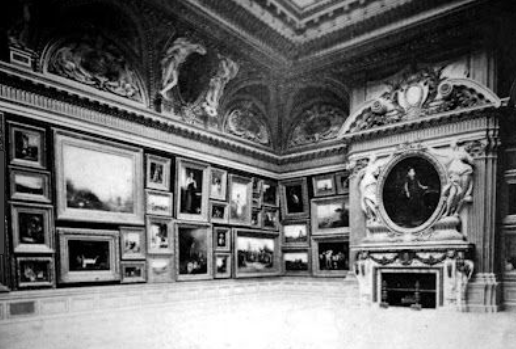Make it, marry it, inherit it or steal it.
From Quadrant Magazine (Australia):
The Husband Hunters: Social Climbing in London and New York
by Anne de Courcy
Weidenfeld & Nicolson, 2017, 320 pages, $22.99
There I was, in an airport bookshop, seeking some entertainment for another long-haul flight, clutching a paperback that had looked promising on the shelf, and so it proved to be. The cover picture was enticing, a coloured-up photograph of an 1890s belle, displaying in pastels the porcelain skin, long straight nose, fine clear eyes and the pile of preferably auburn hair that was all the go at the time, the whole a cultural ensemble for feminine pulchritude, topped off with a bunch of pink peony roses dramatising her blue straw hat. Her neck swathed in a high fichu of fine white lace, the hint of an elegantly generous leg-of-mutton sleeve on her gown and her discreet stud-pearl earrings all said “lady”, but her vaguely eager expression suggested she might be fun nevertheless.
The blurb on the back told me that Libby Purves, in the Times Literary Supplement, had nominated this book as “pure catnip” for “both serious social historians and Downtonish aristo-fanciers”. A double-whammy for me—especially as this book of potted biographies of rich American women living in the decades before the First World War also contains a fascinating series of black-and-white, and some coloured, photographs of the life and times surrounding a very particular social phenomenon which is the book’s raison d’être. In The Husband Hunters Anne de Courcy puts a well-researched focus on the seeming invasion between 1870 and 1914 of young American heiresses into the cash-strapped marriage markets of Europe and Britain, where over 450 of them married titled Europeans, 100 of them British aristocrats, including six dukes, the best catches of all. The number of these marriages peaked in 1895.
These young women were heiresses to what the American novelist Edith Wharton in the 1880s termed the “buccaneer” wealth of America’s industrial capitalist expansion, a concentrated great wealth that lodged with the families of energetic (or lucky) entrepreneurs. The wives of these rich men bellowed out their husbands’ successes by spectacular displays of conspicuous consumption in housing, jewellery, carriages and other embellishments in an attempt to make the restricted invitation lists put out by the similarly profligate and display-prone female guardians of Old Money status, who were dropping their old habits of frugality and prudence in the race to keep their pre-eminent social position against such new contenders. In New York (whence many of the girls came) “the list” meant Mrs Astor’s list, and later Mrs Vanderbilt’s. As nouveau riche girls, frequently short on social status at home, they suffered from their mothers’ intent on remedying that deficit for themselves as well as their daughters, by means of a title which would carry Mamma along with her daughter into Mrs Astor’s ballrooms (pictured below) on any return to New York. Thus by a combination of circumstances at home, American heiresses to this amazing financial bounty brought their money and often their vigour to the titled men of Old Europe, careworn by the requirement of maintaining the ancestral pile and their own familial status and lifestyle during a major economic downturn.
Paris was a favourite initial destination in which to find one’s feet for a later shot at British husband hunting, for the continent had laxer behavioural codes, blooding the New World ingenue for the coming steep learning curve in the more taxing social mores of Britain. However, while this book covers some interesting continental opportunities taken, its main exposition relates primarily to Britain and the Anglophone relationship being cemented by the new White Star Line Atlantic “crossing’, a voyage which, now carrying this book, I was myself just on my way to reprise from New York to Southampton, on the modern Queen Mary; a nostalgic look backwards for today’s boomer generation........MUCH MORE
